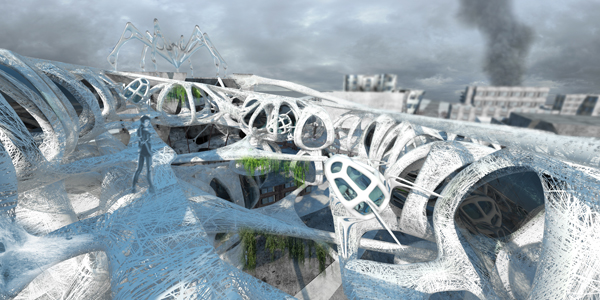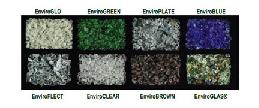
Seeming more like a sci-fi blockbuster script than a 5th year architectural thesis project, student Joseph A. Sarafian certainly paints a bleak dystopian future of our mega cities as his thesis introduction. According to him, the massive scale environmental catastrophes of the 21st Century could just as easily wipe off major human habitation centers.
But their place would be taken by advanced emergency housing colonies, and this collective approach aptly dubbed as Emergent City would house future generations of humanity in a disaster riddled earth. Central to the designer’s grand idea of future housing is the full fledged employing of artificial intelligence as constructional labor elements. He thinks of a digitally controlled group of robotic spiders, called the “Arachne”, which could respond quickly and effectively to emergency related scenarios.
Once transported to the affected site, they can literally ‘weave’ and construct nests (dwelling elements) for those local residents. The robots would employ 3D printing techniques, and can spew a sturdy composite layer of carbon nanotubes, porous alumina, nanogel, and Micro-Encapsulated Phase Change Material (MPCM), to give a substantial form and spatial characteristic to the shelters.
According to the designer:
The Arachne understands two fundamental building types, the suspended unit, and the nested unit. Suspended units are hung from a lattice of spun structure while the nested units are built into existing infrastructure that is salvageable. The structures generated are thus a synthesized byproduct of their environment.
Clearly the availability of such complex mechanisms, especially to cater to emergency situations is certainly a far cry, going by the state of advancement of our modern day architectural practices. But other than A.I, the designer clearly alludes to 3d printing techniques as constructional mediums, and this is where the vibes of practicality become much more evident. Some sections of the automotive industry have already embraced 3d printing as a primary stage of their conceptions, and now maybe it’s time for our eminent construction industry to make use of this technology and give credence to the next generation of structural evolution.
Via: eVolo




